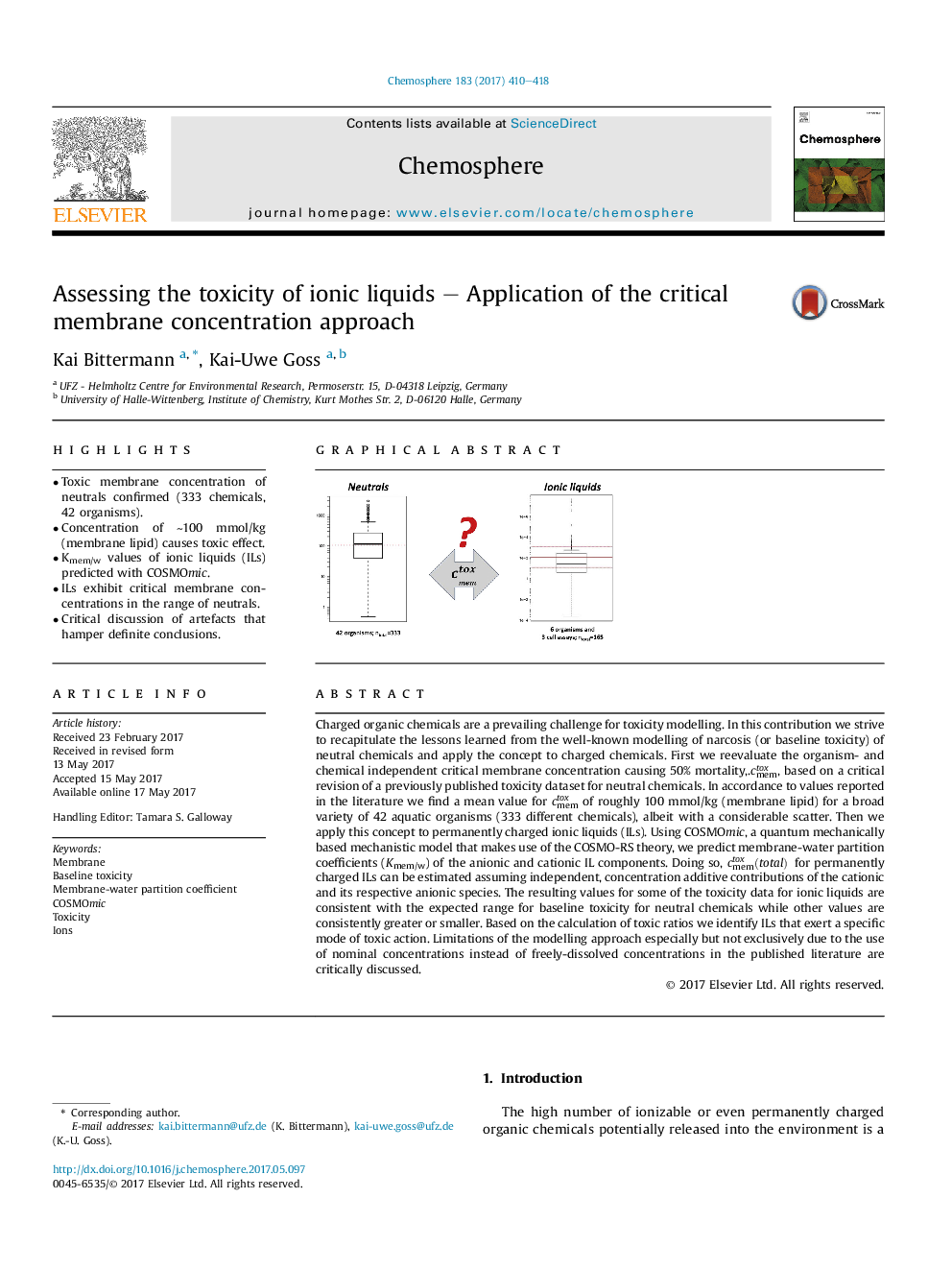| کد مقاله | کد نشریه | سال انتشار | مقاله انگلیسی | نسخه تمام متن |
|---|---|---|---|---|
| 5745977 | 1618788 | 2017 | 9 صفحه PDF | دانلود رایگان |
- Toxic membrane concentration of neutrals confirmed (333 chemicals, 42 organisms).
- Concentration of â¼100Â mmol/kg (membrane lipid) causes toxic effect.
- Kmem/w values of ionic liquids (ILs) predicted with COSMOmic.
- ILs exhibit critical membrane concentrations in the range of neutrals.
- Critical discussion of artefacts that hamper definite conclusions.
Charged organic chemicals are a prevailing challenge for toxicity modelling. In this contribution we strive to recapitulate the lessons learned from the well-known modelling of narcosis (or baseline toxicity) of neutral chemicals and apply the concept to charged chemicals. First we reevaluate the organism- and chemical independent critical membrane concentration causing 50% mortality,.cmemtox, based on a critical revision of a previously published toxicity dataset for neutral chemicals. In accordance to values reported in the literature we find a mean value for cmemtox of roughly 100Â mmol/kg (membrane lipid) for a broad variety of 42 aquatic organisms (333 different chemicals), albeit with a considerable scatter. Then we apply this concept to permanently charged ionic liquids (ILs). Using COSMOmic, a quantum mechanically based mechanistic model that makes use of the COSMO-RS theory, we predict membrane-water partition coefficients (Kmem/w) of the anionic and cationic IL components. Doing so, cmemtox(total) for permanently charged ILs can be estimated assuming independent, concentration additive contributions of the cationic and its respective anionic species. The resulting values for some of the toxicity data for ionic liquids are consistent with the expected range for baseline toxicity for neutral chemicals while other values are consistently greater or smaller. Based on the calculation of toxic ratios we identify ILs that exert a specific mode of toxic action. Limitations of the modelling approach especially but not exclusively due to the use of nominal concentrations instead of freely-dissolved concentrations in the published literature are critically discussed.
121
Journal: Chemosphere - Volume 183, September 2017, Pages 410-418
